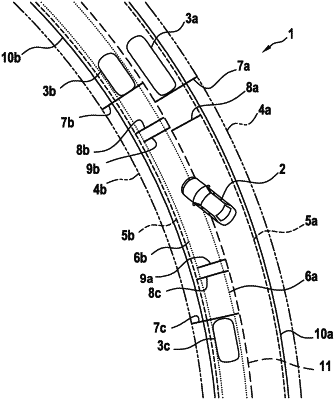| CPC G01C 21/3453 (2013.01) [B60W 10/04 (2013.01); B60W 10/18 (2013.01); B60W 10/20 (2013.01); B60W 30/09 (2013.01); B60W 30/0956 (2013.01); B60W 30/143 (2013.01); B60W 50/14 (2013.01); B60W 60/0013 (2020.02); B60W 60/0015 (2020.02); B60W 2554/20 (2020.02); B60W 2554/40 (2020.02)] | 10 Claims |

|
1. A computer-implemented method for calculating a trajectory of a mobile platform, comprising:
calculating the trajectory by solving an optimization problem, a total cost function of the optimization problem depending on a first boundary cost function, the first boundary cost function being a function of a position of the mobile platform which has a continuous and non-constant portion; and
furnishing, based on the calculated trajectory, a control signal for applying control to a steering system of the mobile platform, and/or a control signal for applying control to a propulsion system of the mobile platform, and/or a control signal for applying control to a braking system, and/or a warning signal for warning an occupant of the mobile platform.
|